Open Birthing Patterns in the Pelvis
Open Birthing Patterns in the Pelvis
When a baby comes out vaginally, there are a lot of accommodations the tissues of the pelvis have to go through in order to accomplish this feat. We know the muscles and vaginal tissues need to stretch to allow the baby through, but the pelvic bones also need to move.
If you look at the picture below, you see all the different directions the bones of the pelvis need to move in order to get a baby into the pelvis and then out.
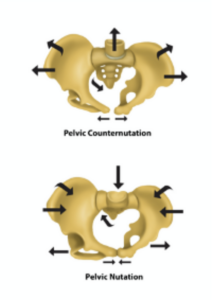
To allow the baby into the pelvis the bones of the pelvis go into counternutation, where the top of the sacrum or the sacral base moves backwards which causes the tailbone to move forward. The iliac crest moves ever so slightly out to the side and the ischiums, or your sit bones, move medially. This allows the pelvic inlet to widen for the baby’s head.
Once the baby’s head hits the pelvic floor muscles at the level of the ischial spines the pelvic bones start moving in the opposite directions. The sacral base moves anteriorly and the tailbone moves posteriorly while the ischial bones move out to the sides. This allows the baby to come on out.
Now while you would like to think that this all happens symmetrically that is not always the case. Depending on the position the birthing person is in or tension and tone in the pelvic floor muscles can cause baby to push one side ischium out more than the other.
Let me show you different scenarios of what can happen to the pelvic bones after birth.
Normal alignment of the pelvic outlet:
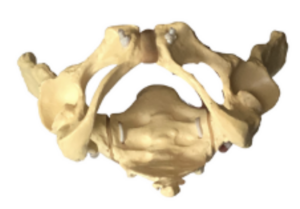
Here is what should happen as a baby comes out in the midline so all bones get even pressure to open:

This is what happens when the right ischium has more pressure to open up wider than the left side:

Think about all the tension on those pelvic floor muscles that attach between the sacrum, tailbone and the ischial bones. This is going to make contracting them harder as a stretched out muscle, or muscle on tension is not as strong.
Here is the same thing happening to the left ischium:
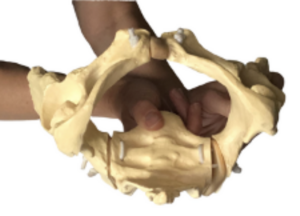
Imagine what sitting on these ischial bones might feel like. Won’t feel as even side to side. Notice the strain in the sacroiliac joint with the ischium splayed out to the side.
Normal Pelvic Inlet:
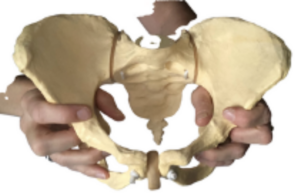
Widened Pelvic Ring
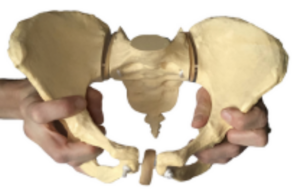
This is another pattern I have found in some postpartum clients where the entire pelvic ring has widened. You can feel for this pattern when you find decrease medial mobility in the PSIS’s along with the ischiums being splayed apart.
While all of these are possibilities post birth, there is help to get them to return to normal. Any of my students who have taken my Holistic Treatment of the Postpartum Body course can help you get your pelvic bones back into place. You can find one in my directory.
Read this blog post to learn more about the effects of an open birthing pattern on your body.

